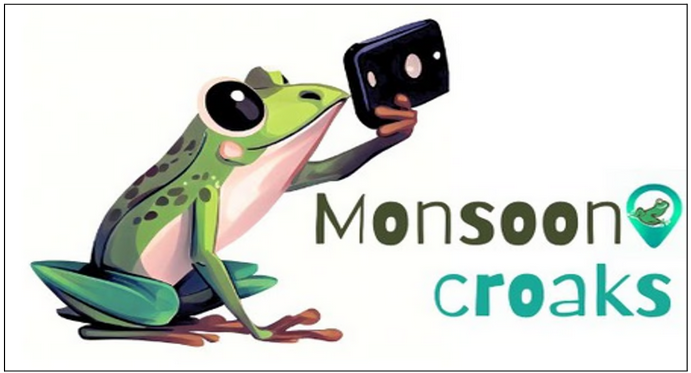News Excerpt:
The Centre for Citizen Science and Biodiversity Informatics under the Kerala Forest Research Institute (KFRI) is organising Monsoon Croaks Bioblitz 2024, a citizen science programme aimed at documenting the frogs of Kerala during the monsoon season.

More about News:
- Monsoon is a festive season for frogs as they are most active and breed during the rainy season.
- The survival of frogs, which serves as an indicator of the ecosystem’s health, is being challenged by many factors such as
- Climate change, untimely rainfall patterns, habitat loss and water pollution.
- As a result, 41% of the world’s frogs are on the IUCN Red List of endangered species. The situation is no different in Kerala, which has more than 200 frog species.
The Monsoon Croaks Initiative
- The overarching goal of 'Monsoon Croaks' is to cultivate scientific curiosity and interest in frogs among the public. Social media platforms serve as conduits for spreading knowledge through posters and articles.
- A bioblitz is an intensive survey conducted over a period of time to identify and document as many species as possible within a designated area.
- It is a popular participatory survey method globally.
- Monsoon Croaks Bioblitz is a four-month-long public participation science project.
- Forests are the primary habitats for frogs, they also inhabit farms, gardens, and backyards. However, our understanding of these amphibians is limited.
- The endangered purple frog, Malabar torrent frog, and Anamala gliding frog all reside in ecosystems beyond protected areas. Identifying key habitats is crucial for their protection
- People of all ages can participate by uploading photographs of frogs and their sounds through the iNaturalist app.
- All scientific observations made available during the bioblitz will become part of the Global Biodiversity Information Facility (GBIF), a biodiversity open-source database.
- The information can be used for
- biodiversity awareness,
- habitat conservation,
- conservation status assessment of species,
- scientific literacy,
- climate change research, and policymaking.
Outcomes of Monsoon Croaks 2023
- In 2023, around 200 citizen scientists participated, and 1,223 observations were uploaded. About 80 amphibian species were found, including 11 species included on the IUCN Red List.
- Notably, the findings extended beyond the rare species, shedding light on common backyard ones.
- The top observed species were the Wayanad Bush Frog and the Asian Common Toad. Important amphibian species recorded include:
- The Critically Endangered Resplendent Shrub frog, Endangered Malabar Torrent Toad, Small Tree Frog, Vulnerable Anaimalai Flying Frog, and the Near Threatened Purple Frog.
- The success of the project underscores the importance of ongoing training and support for citizen scientists to empower communities to contribute to biodiversity conservation efforts.
|
About Global Biodiversity Information Facility
|
|
About IUCN:
|


